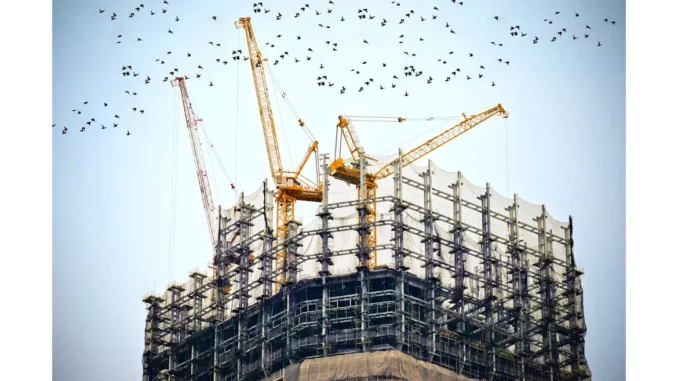
As a journalist who frequently explores the evolving landscape of building regulations, I recently had the opportunity to sit down with Mark Thompson, a seasoned construction manager working in the timber frame sector. Mark has been involved in the construction industry for over two decades and has seen firsthand how updates to building regulations, such as the recent changes to Part L, impact the industry. Our conversation provided a fascinating glimpse into the updated Part L of the Building Regulations and the implications of the new Standard Assessment Procedure (SAP10) methodology.
Successful low-energy building design hinges on careful planning. Focus360 Energy can help.
The Updated Part L: A Closer Look
Implemented on 15th June 2023, the updated Part L of the Building Regulations aims to enhance the energy efficiency and sustainability of buildings in the UK. This update is part of the country’s broader initiative to reduce environmental impact and achieve Net Zero carbon emissions by 2050.
“Part L impacts everyone in the construction industry,” Mark began. “Whether you’re building new homes, renovating existing structures, or involved in non-domestic buildings, these regulations are crucial. The changes are comprehensive and require us to rethink our approach to construction and energy performance.”
New Carbon Emissions & Energy Efficiency Standards
One of the most significant changes in the updated Part L is the new carbon emissions and energy efficiency standards. New homes must now produce at least 31% less carbon emissions, while new non-domestic buildings must produce at least 27% less. These stringent requirements necessitate the adoption of innovative construction techniques and materials.
“Timber frame construction is particularly well-suited to meet these new standards,” Mark explained. “Timber offers excellent thermal performance and lower U-values, which are essential for energy efficiency. For example, we can achieve wall U-values as low as 0.18-0.19 with a single 140mm deep timber frame. This is significantly better than many alternative construction methods.”
The Role of the Updated Standard Assessment Procedure (SAP10)
The transition from SAP 2012 to SAP10 has introduced updated carbon emission factors and new metrics for assessing building performance. This change aims to provide a clearer representation of climate change impacts and ensure buildings meet the latest environmental standards.
“SAP10 is a game-changer,” Mark noted. “It emphasises Psi-values and thermal bridging, which means we need to supply accurate Psi-values to energy assessors. This ensures that the building’s performance is evaluated correctly, reflecting its true impact on the environment.”
Before handing over a completed building, a SAP10 Building Regulations England Part L (BREL) report is now required. This report verifies that the building was constructed as initially approved, providing a crucial check on compliance.
The Importance of Photographic Evidence
One of the more practical changes in the updated Part L is the requirement for photographic evidence. Builders must now document each stage of construction with photographs to demonstrate compliance with the regulations.
“Photographic evidence adds a layer of accountability,” Mark said. “It ensures that every step of the construction process meets the regulatory standards. This might seem like a small detail, but it’s essential for maintaining transparency and upholding the integrity of the building process.”
Benefits of the Updated Part L Regulations
The updated Part L regulations bring several benefits, including increased energy efficiency and reduced carbon emissions. Higher standards for insulation, heating, lighting, and ventilation systems directly impact the energy demand of buildings, resulting in long-term financial savings for owners and occupants.
“These updates push us towards a more sustainable and energy-efficient future,” Mark commented. “By incorporating renewable energy sources like solar panels or heat pumps into building designs, we’re not just meeting regulations; we’re contributing to a greener future.”
Contributing to a Sustainable Future
The emphasis on energy efficiency in the updated Part L encourages the use of sustainable building methods and materials. Timber, for instance, offers lower U-values through thinner walls, contains less embodied carbon, and captures carbon as a natural asset.
“Timber is a fantastic material for sustainable construction,” Mark stated. “It aligns perfectly with the goals of the updated Part L, offering both environmental benefits and excellent performance characteristics. It’s a win-win for developers and the environment.”
Training Opportunities & Stricter Compliance
The new requirements in Part L also highlight the need for ongoing training and upskilling within the construction industry. Professionals must stay updated on the latest regulations and techniques to ensure compliance.
“Training is more critical than ever,” Mark emphasised. “The updated regulations are stringent, and non-compliance can lead to severe penalties. It’s essential for everyone in the industry to be well-versed in these changes and adapt accordingly.”
Conclusion
My conversation with Mark Thompson provided valuable insights into the updated Part L of the Building Regulations and the new SAP10 methodology. It’s clear that these changes are driving the construction industry towards greater energy efficiency and sustainability. Timber frame construction, with its excellent thermal performance and environmental benefits, is well-equipped to meet these new standards.
As the industry continues to evolve, staying informed and adaptable is crucial. The updated Part L is not just a set of regulations; it’s a step towards a more sustainable and resilient built environment. For professionals like Mark, it’s an opportunity to lead the way in creating buildings that are both efficient and environmentally friendly.
Lewis Davis


Be the first to comment